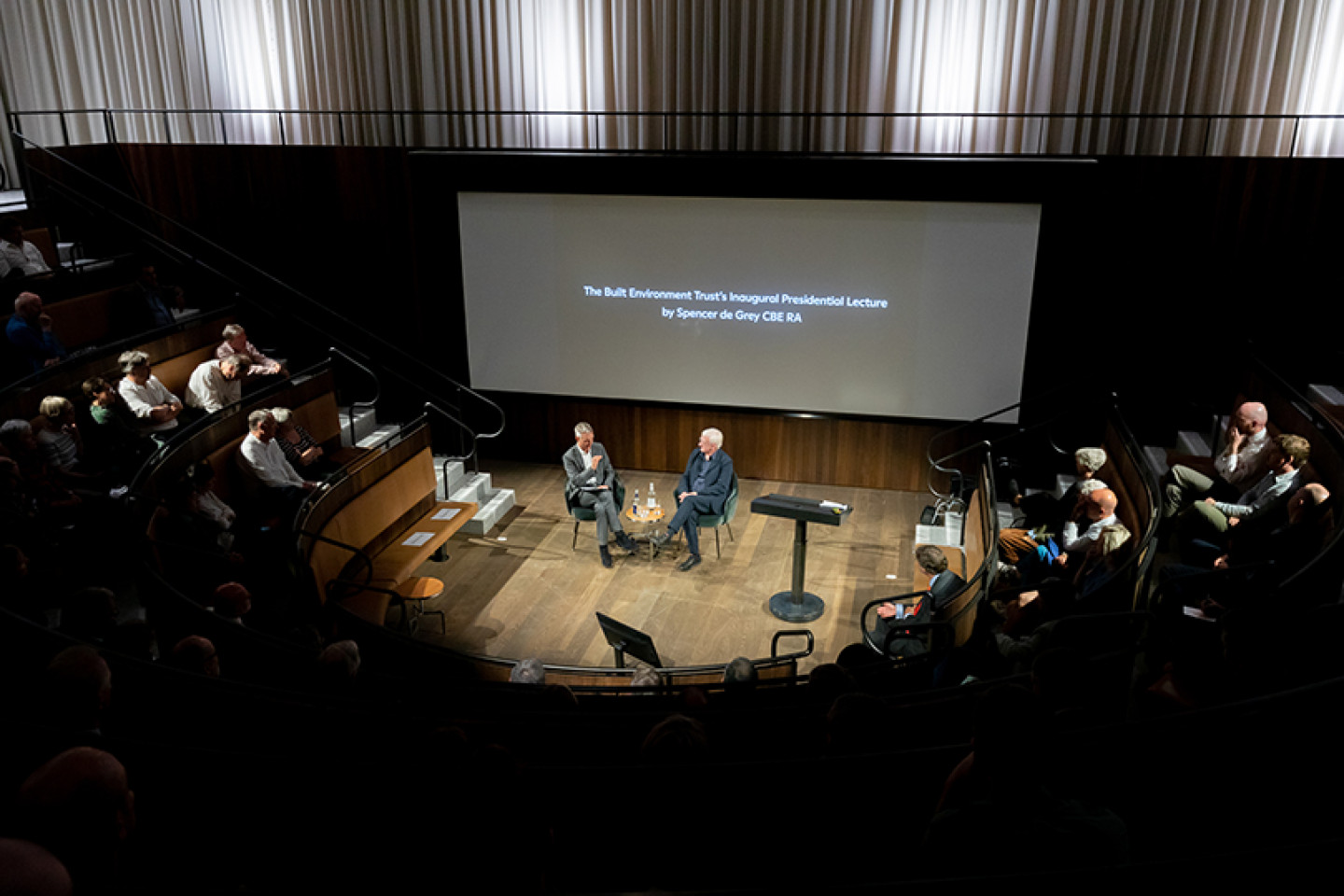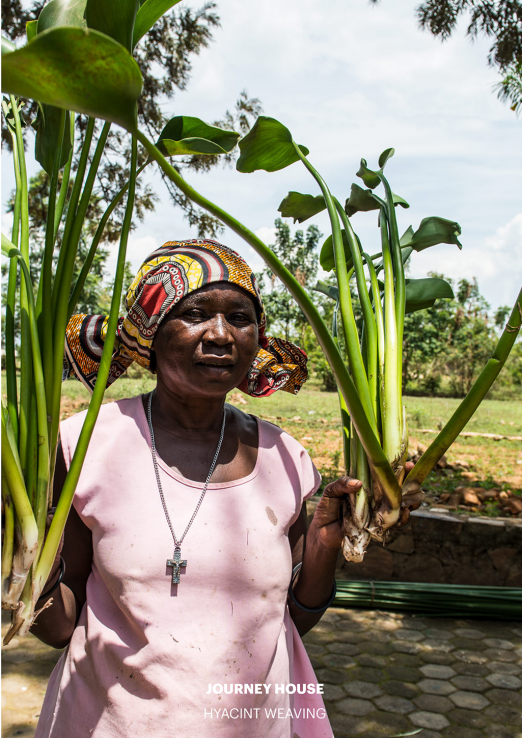Tuesday 18 June 2019 marked the Building Centre’s inaugural presidential lecture at the Royal Academy of Arts.
In the presence of our Patron The Duke of Gloucester, this year’s lecture was by Foster + Partners’ Senior Executive Partner and Head of Design Spencer de Grey CBE RA, President of the Built Environment Trust, the charity that owns the Building Centre.
Spencer de Grey joined Foster + Partners in 1973 and in 1979 set-up the Hong Kong office where he worked before returning to London in 1981. He oversaw the completion of Stansted Airport in 1991, the same year he was made partner. He has overseen a range of projects in the UK and abroad including; the Commerzbank Headquarters in Frankfurt, the Law Faculty at Cambridge University, the Great Court at the British Museum, Boston’s Museum of Fine Arts and many more. In 1997 Spencer was honoured with a CBE and in 2008 he was elected as a Royal Academician.
In accordance with Spencer’s theme for the 2019 RA Summer Exhibition architecture gallery which he curated, his lecture focused on the issue of sustainability in relation to the industry’s choice of materials and the craft of building. “I make no apologies for my topic [sustainability]. I think it is a subject matter that affects us all.” Born out of a materials library of the AA basement in 1931, this was in keeping with the Building Centre’s interest in materials and innovation – the practice of building, rather than the theory of architecture.
In 2015 the UN in Paris decreed that if we were to meet the challenges of global warming, we [the global community] have to restrict temperature increase to no more than 2°C and now, since the IPPC’s 2018 report, 1.5°C above preindustrial levels. If you consider that buildings and their construction currently contribute 40% of emissions worldwide, the industry has a huge role to play in mitigating its environmental impact and help meet this global target. In his address Spencer emphasised that “As a collective we have a lot to do and a lot to worry about. It is daunting.”
Although sustainability standards such as LEED, BREEAM and the China Green Building Label point us in the right direction, even their highest ratings are not sufficient to meet the 1.5°C target. Why? Part of the issue is because current strategies largely focus on tackling ‘operational emissions’ rather than the role of ‘embodied emissions’ in the lifecycle of a building.
Operational emissions is the carbon dioxide emitted during the ‘in-use phase’ of a building. It can be broken down further into ‘regulated loads’ (indoor lighting, air conditioning, heating etc) and ‘unregulated loads’ (office equipment, transportation etc.). Designers can help reduce operational energy used through passive design (e.g. natural light and ventilation), more efficient systems (e.g. heat recovery systems), renewable energy sources and strategies that mitigate the impacts of user behaviour (e.g. more efficient equipment). Through a series of case-studies from Foster + Partners’ repertoire of projects, Spencer highlighted strategic design elements that have played a role in reducing operational carbon emissions of the buildings. Among them was Commerzbank in Frankfurt, Bloomberg’s European headquarters in London and the HM Treasury in Whitehall, office buildings whose design and engineering approach provided natural ventilation. In the case of Commerzbank, the use of LED Lighting, electricity from renewable energy sources and chilled ceilings has meant a 50% reduction in carbon dioxide emissions. At the design stage it was predicted that the building would be naturally ventilated for 60% of the year, but the building remains naturally ventilated for 85% of the year through good building management.
The ‘embodied emissions’ of a building take into account the carbon emissions released during the construction process including the extraction of materials, their processing, shipping / transport, assembly and disposal. In 2017 a graph published by The Royal Institution of Chartered Surveyors revealed that during a 60 year lifecycle of a typical office building, 32% of carbon emissions will be operational compared to 67% of the total emissions being embodied. Spencer urged for sustainability to be at the core of design and choice of materials. This information can be difficult to obtain but organisations have started to publish information about the embodied energy of building materials.
Fosters + Partners’ Buenos Aires Ciudad Casa de Gobierno, Hearst Tower in New York, Xiao Jing Wan University and Maggie’s Cancer Centre in Manchester are all examples where materials (concrete, steel, brick and timber respectively) were sourced and/or transported in a way to reduce embodied carbon emissions. For example, the Hearst Tower saved 27% on structural embodied carbon by using 70% recycled steel and the Xiao Jing Wan University up to 60% in transport-related emissions by responsibly sourcing the clay and bricks.
Other critical elements to building sustainably highlighted by Spencer de Grey included; the role of fit-out and how embodied carbon can be reduced through the choice of furniture (also known as ‘embodied carbon in use’), designing ‘loose fit’ buildings where the spaces can adapt and, with long-term use in mind, using good quality materials that last.
He also made the poignant observation that the profession is geared towards making new buildings and doesn’t emphasise the importance of refurbishment.
“In a way, architects building new buildings have it pretty easy because you are starting from scratch and it is within your power and your client’s to design a building that is as sustainable as possible…I think the real challenge that we all face is how you convert the existing building stock into something that is sustainable. I think it is more important today than ever before that we keep on reusing the existing building stock and we don’t just tear down a 60s office building which with a bit of love and attention can probably have been made fit for purpose today. I think there are some very exciting challenges and those have been met in a number of cases but it is very much more difficult.”
Architecture schools, institutions like the RIBA and the Government could play a role in providing the industry with the necessarily skills, guidance and enthusiasm to carry-out refurbishment projects and address the challenges of sustainable building.
Spencer de Grey’s lecture and its message is not just for architects. It is for the whole built environment community of engineers, architects, artists, academics, developers and material manufacturers to come together with the shared goal of improving the practice of building by making it more sustainable.


